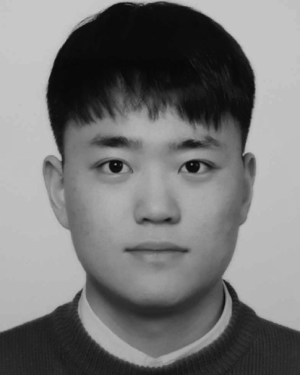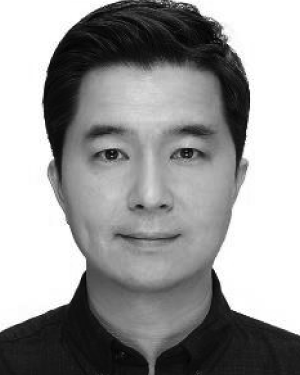SEC-BADAEC can correct single errors and byte-aligned double adjacent errors (BADAEs) using the same redundancy as SEC. Most double adjacent errors are BADAEs due to the ...
Abstract:
Shrinking process technology and rising memory densities have made memories increasingly vulnerable to errors. Accordingly, DRAM vendors have introduced On-die Error Corr...Show MoreMetadata
Abstract:
Shrinking process technology and rising memory densities have made memories increasingly vulnerable to errors. Accordingly, DRAM vendors have introduced On-die Error Correction Code (O-ECC) to protect data against the growing number of errors. Current O-ECC provides weak Single Error Correction (SEC), but future memories will require stronger protection as error rates rise. This paper proposes a novel ECC, called Single Error Correction–Byte-Aligned Double Adjacent Error Correction (SEC-BADAEC), and its construction algorithm to improve memory reliability. SEC-BADAEC requires the same redundancy as SEC O-ECC, but it can also correct some frequent 2-bit error patterns. Our evaluation shows SEC-BADAEC can improve memory reliability by 23.5% and system-level reliability by 29.8% with negligible overheads.
SEC-BADAEC can correct single errors and byte-aligned double adjacent errors (BADAEs) using the same redundancy as SEC. Most double adjacent errors are BADAEs due to the ...
Published in: IEEE Access ( Volume: 10)
Funding Agency:

Department of Electrical and Computer Engineering, Sungkyunkwan University, Suwon, South Korea
Yuseok Song received the B.S. degree in semiconductor systems engineering from Sungkyunkwan University, South Korea, in 2021, where he is currently pursuing the M.S. degree in electrical and computer engineering. His current research interests include memory sub systems and reliability.
Yuseok Song received the B.S. degree in semiconductor systems engineering from Sungkyunkwan University, South Korea, in 2021, where he is currently pursuing the M.S. degree in electrical and computer engineering. His current research interests include memory sub systems and reliability.View more

Department of Electrical and Computer Engineering, Sungkyunkwan University, Suwon, South Korea
Sangjae Park received the B.S. degree in electronic and electrical engineering from Sungkyunkwan University, South Korea, in 2021, where he is currently pursuing the M.S. degree in electrical and computer engineering. His current research interest includes memory reliability.
Sangjae Park received the B.S. degree in electronic and electrical engineering from Sungkyunkwan University, South Korea, in 2021, where he is currently pursuing the M.S. degree in electrical and computer engineering. His current research interest includes memory reliability.View more

NVIDIA, Santa Clara, CA, USA
Michael B. Sullivan (Member, IEEE) received the bachelor’s and master’s degrees in computer science, computer engineering, and mathematics from George Mason University, and the M.S. and Ph.D. degrees in computer architecture from the University of Texas at Austin. Specifically, he has studied system-level reliability modeling with cross-layer coordination, strong memory system protection, low-cost pipeline protection, and...Show More
Michael B. Sullivan (Member, IEEE) received the bachelor’s and master’s degrees in computer science, computer engineering, and mathematics from George Mason University, and the M.S. and Ph.D. degrees in computer architecture from the University of Texas at Austin. Specifically, he has studied system-level reliability modeling with cross-layer coordination, strong memory system protection, low-cost pipeline protection, and...View more

Department of Semiconductor Systems Engineering, Sungkyunkwan University, Suwon, South Korea
Jungrae Kim (Senior Member, IEEE) received the B.S. and M.S. degrees in electrical engineering from Seoul National University, South Korea, and the Ph.D. degree from the University of Texas at Austin, USA. From 2003 to 2016, he was a Senior Engineer at Samsung Electronics, where he developed application processors. From 2016 to 2020, he was a Senior Software Engineer at Microsoft corporation, USA, architecting data center...Show More
Jungrae Kim (Senior Member, IEEE) received the B.S. and M.S. degrees in electrical engineering from Seoul National University, South Korea, and the Ph.D. degree from the University of Texas at Austin, USA. From 2003 to 2016, he was a Senior Engineer at Samsung Electronics, where he developed application processors. From 2016 to 2020, he was a Senior Software Engineer at Microsoft corporation, USA, architecting data center...View more

Department of Electrical and Computer Engineering, Sungkyunkwan University, Suwon, South Korea
Yuseok Song received the B.S. degree in semiconductor systems engineering from Sungkyunkwan University, South Korea, in 2021, where he is currently pursuing the M.S. degree in electrical and computer engineering. His current research interests include memory sub systems and reliability.
Yuseok Song received the B.S. degree in semiconductor systems engineering from Sungkyunkwan University, South Korea, in 2021, where he is currently pursuing the M.S. degree in electrical and computer engineering. His current research interests include memory sub systems and reliability.View more

Department of Electrical and Computer Engineering, Sungkyunkwan University, Suwon, South Korea
Sangjae Park received the B.S. degree in electronic and electrical engineering from Sungkyunkwan University, South Korea, in 2021, where he is currently pursuing the M.S. degree in electrical and computer engineering. His current research interest includes memory reliability.
Sangjae Park received the B.S. degree in electronic and electrical engineering from Sungkyunkwan University, South Korea, in 2021, where he is currently pursuing the M.S. degree in electrical and computer engineering. His current research interest includes memory reliability.View more

NVIDIA, Santa Clara, CA, USA
Michael B. Sullivan (Member, IEEE) received the bachelor’s and master’s degrees in computer science, computer engineering, and mathematics from George Mason University, and the M.S. and Ph.D. degrees in computer architecture from the University of Texas at Austin. Specifically, he has studied system-level reliability modeling with cross-layer coordination, strong memory system protection, low-cost pipeline protection, and efficient and reliable application-specific acceleration. He is currently a Senior Research Scientist with the Architecture Research Group, NVIDIA. His research interests include design of efficient, dependable, and secure large-scale computer systems.
Michael B. Sullivan (Member, IEEE) received the bachelor’s and master’s degrees in computer science, computer engineering, and mathematics from George Mason University, and the M.S. and Ph.D. degrees in computer architecture from the University of Texas at Austin. Specifically, he has studied system-level reliability modeling with cross-layer coordination, strong memory system protection, low-cost pipeline protection, and efficient and reliable application-specific acceleration. He is currently a Senior Research Scientist with the Architecture Research Group, NVIDIA. His research interests include design of efficient, dependable, and secure large-scale computer systems.View more

Department of Semiconductor Systems Engineering, Sungkyunkwan University, Suwon, South Korea
Jungrae Kim (Senior Member, IEEE) received the B.S. and M.S. degrees in electrical engineering from Seoul National University, South Korea, and the Ph.D. degree from the University of Texas at Austin, USA. From 2003 to 2016, he was a Senior Engineer at Samsung Electronics, where he developed application processors. From 2016 to 2020, he was a Senior Software Engineer at Microsoft corporation, USA, architecting data center accelerators. He joined Sungkyunkwan University, in 2020, as an Assistant Professor. His current research interests include heterogeneous architecture, memory sub systems, and reliability.
Jungrae Kim (Senior Member, IEEE) received the B.S. and M.S. degrees in electrical engineering from Seoul National University, South Korea, and the Ph.D. degree from the University of Texas at Austin, USA. From 2003 to 2016, he was a Senior Engineer at Samsung Electronics, where he developed application processors. From 2016 to 2020, he was a Senior Software Engineer at Microsoft corporation, USA, architecting data center accelerators. He joined Sungkyunkwan University, in 2020, as an Assistant Professor. His current research interests include heterogeneous architecture, memory sub systems, and reliability.View more

